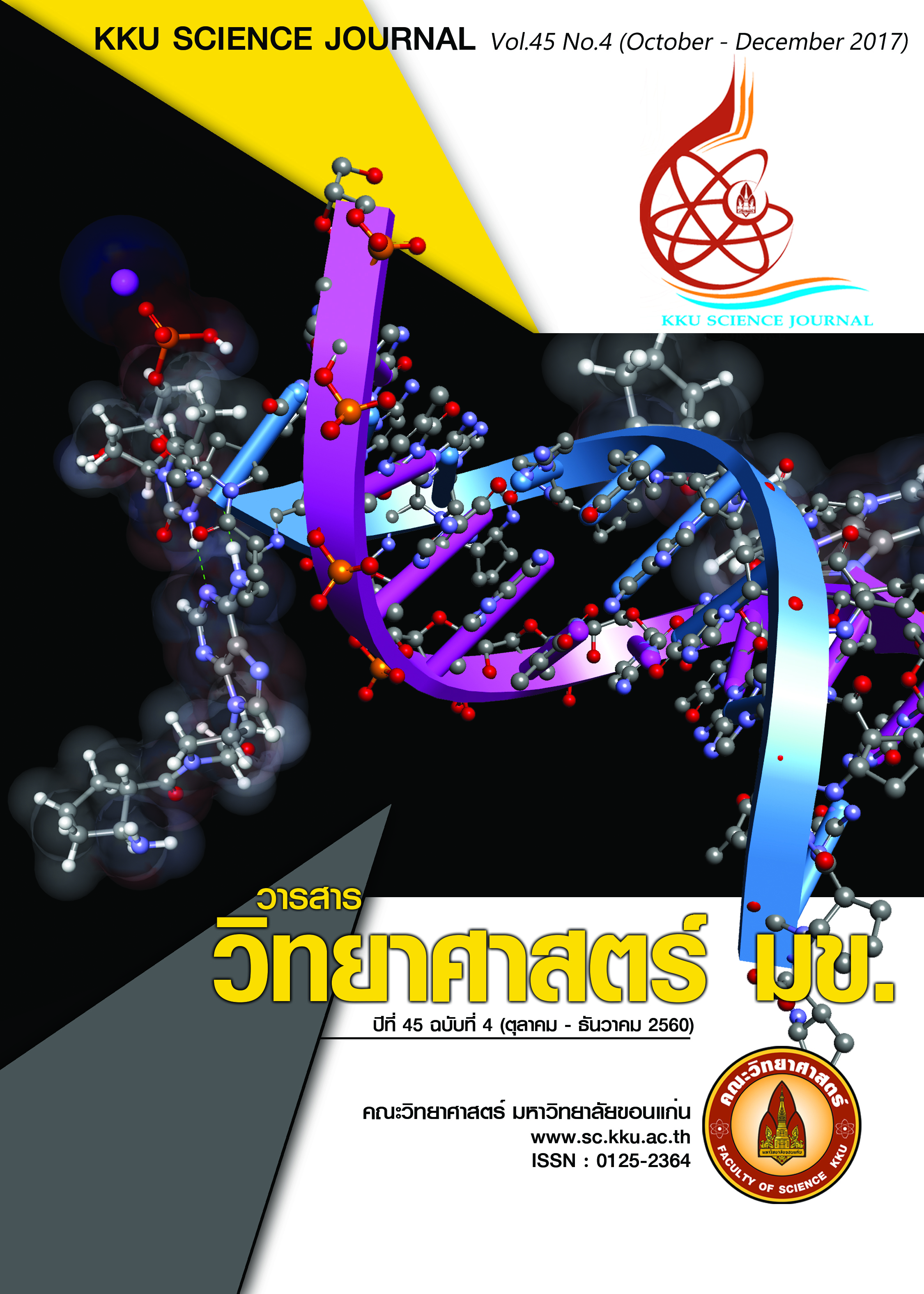Effect of Chromium on Phytoremediation of Phenanthreneand Pyrene-Contaminated Soil by Luffa acutangula and Potential of Chromium Accumulation by Plant
Main Article Content
Abstract
This study was investigated the cropping of ridge gourd to remove phenanthrene, pyrene and chromium from phenanthrene/pyrene/ chromium trivalent-contaminated soil. The presence of phenanthrene, pyrene and chromium trivalent in soil did not affect on some growth parameters of ridge gourd such as root length, root weight, shoot length, shoot weight, number of shoots per plant, leaves high and leaves weight. Only leaves wide, chlorophyll b and total chlorophyll content of ridge gourd grown in soil contaminated by phenanthrene/pyrene/chromium trivalent-contaminated soil were lower than those of ridge gourd grown in phenanthrene/pyrene-contaminated soil or non-contaminated soil. However, growth of ridge gourd did not increase phenanthrene and pyrene removal from chromium trivalent-contaminated soil. Percentage of phenanthrene and pyrene remaining in soil either planting with ridge gourd or unplanted control was raging from 18.3 – 43.2 and 22.3 – 40.9 on the 50 day of transplantation, respectively. Moreover, accumulation of phenanthrene, pyrene and chromium trivalent by ridge gourd was negligible. Thus, ridge gourd was not appropriate for use in phytoremediation of soil co-contaminated with PAH and chromium. The main mechanism of phenanthrene and pyrene removal in this study may result from the activity of indigenous PAH-degraders that already presence in soil.
Article Details

This work is licensed under a Creative Commons Attribution-NonCommercial-NoDerivatives 4.0 International License.


